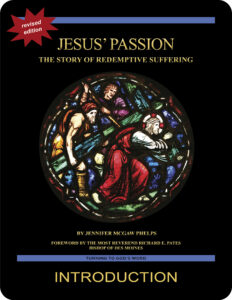homily
 The Gospel According to Luke 24:13–35 (NABRE) records the familiar story of the two disciples on who meet Jesus on the road to Emmaus. There are several hints in the text that suggest this encounter is a precursor to the Mass. It happens on the first day of the week, Sunday. The emphasis on the Scriptures leading to Christ strongly resembles the Liturgy of the Word. Finally, the passage concludes with the breaking of the bread, and in that act, Jesus is made known to the disciples. This breaking of the bread resembles the Liturgy of the Eucharist.
The Gospel According to Luke 24:13–35 (NABRE) records the familiar story of the two disciples on who meet Jesus on the road to Emmaus. There are several hints in the text that suggest this encounter is a precursor to the Mass. It happens on the first day of the week, Sunday. The emphasis on the Scriptures leading to Christ strongly resembles the Liturgy of the Word. Finally, the passage concludes with the breaking of the bread, and in that act, Jesus is made known to the disciples. This breaking of the bread resembles the Liturgy of the Eucharist.
Perhaps nothing makes this connection more strongly, however, than a somewhat odd word choice from the Gospel According to Luke 24:14–15 (NABRE): “and they were conversing about all the things that had occurred. And it happened that while they were conversing and debating. …” The word here translated twice as “conversing” is also sometimes translated as “communing.” The Greek word ὁμιλέω (homileo) comes from a word that means “crowd” and is related to the word that is the root of the English word homily. This is an unusual word choice because there isn’t exactly a large crowd—Scripture specifies that only two disciples are present. This encounter nonetheless marks the first Christian Sunday homily and sets the tone and expectation for what we still do today. While Jesus is more recognizable in the breaking of the bread, it’s also worth noting that he’s just as present in the Liturgy of the Word.
you also may like our free Lenten study of Jesus’ Passion (digital only)
 Jesus’ Passion: The Story of Redemptive Suffering is a five-lesson Catholic Bible study offering an in-depth look at the biblical foundations of the movie The Passion of the Christ. This revised study, which has been granted an imprimatur, contains all of the original material of the 2004 edition as well as many new features in an improved, reader-friendly format. Click on the book’s cover to view the introduction. Free digital lessons of Jesus’ Passion: The Story of Redemptive Suffering are available on the website during Lent.
Jesus’ Passion: The Story of Redemptive Suffering is a five-lesson Catholic Bible study offering an in-depth look at the biblical foundations of the movie The Passion of the Christ. This revised study, which has been granted an imprimatur, contains all of the original material of the 2004 edition as well as many new features in an improved, reader-friendly format. Click on the book’s cover to view the introduction. Free digital lessons of Jesus’ Passion: The Story of Redemptive Suffering are available on the website during Lent.
 Click on the picture of the statue of Moses with horns (above) to learn more about Lost in Translation. A new entry is archived each Monday. Contact us to receive Lost in Translation by email every week. You may use any of the contact links on our website to ask Matthew a question.
Click on the picture of the statue of Moses with horns (above) to learn more about Lost in Translation. A new entry is archived each Monday. Contact us to receive Lost in Translation by email every week. You may use any of the contact links on our website to ask Matthew a question.
